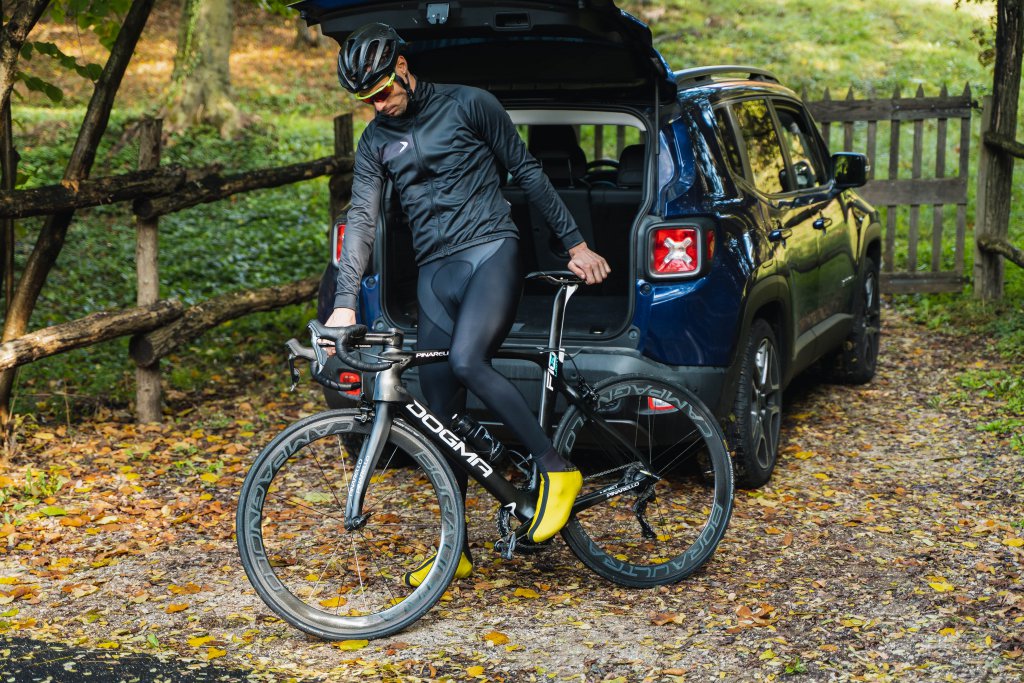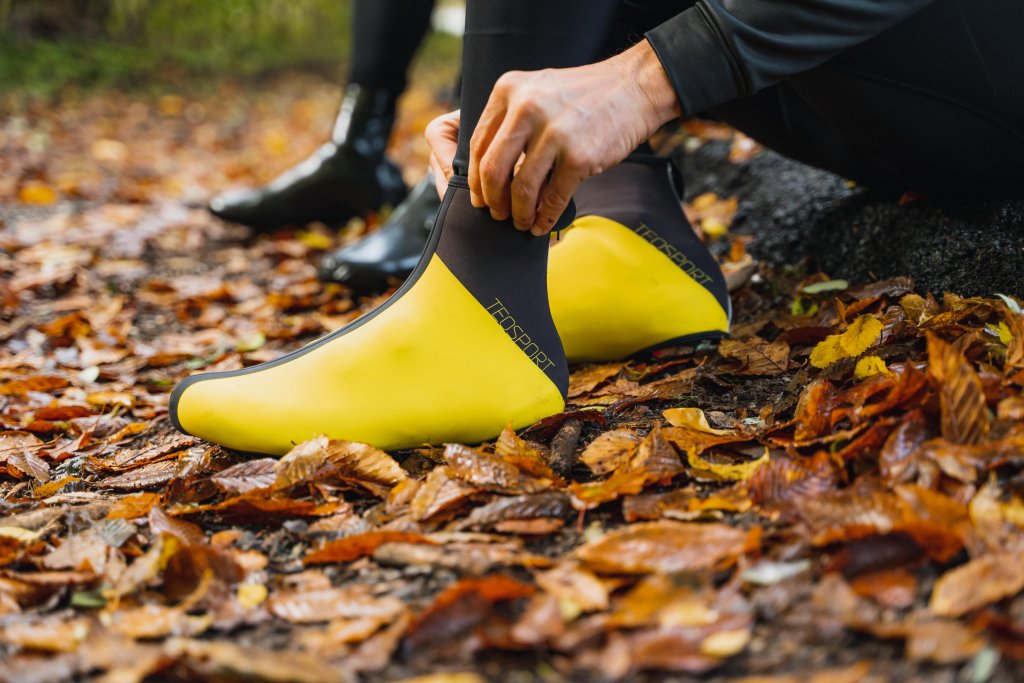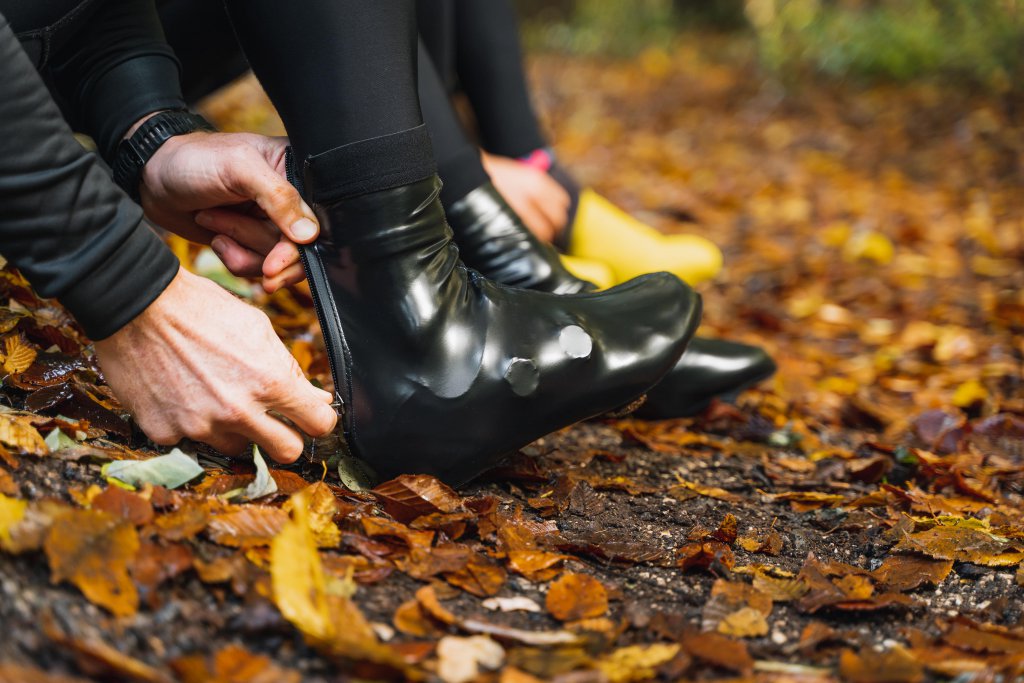30 Mar Winter cycling socks: how to choose the right ones
Cycling socks are a crucial piece of clothing for indulging your passion on two wheels in the winter months while reducing health risks. Socks have the fundamental function of keeping the extremities warm: as temperatures drop, the body reacts by pouring blood circulation to vital organs and reducing that to peripheral areas of the body. For this reason, riding a bike in winter without adequate hand and foot coverings is likely to cause those areas of the body to experience the unpleasant sensation of frostbite.
Of course, socks alone cannot work miracles: it is important to combine them with quality winter shoes and shoe covers to improve the overall defense against the cold.
Meanwhile, let’s see what features make winter socks really effective!
Quality winter cycling socks: how to recognize them
Winter socks are not like other types. They are somewhat stiff and very tight around the foot, so as to ensure the transfer of leg power to the pedal. Thin, seamed winter socks are not at all ideal for two-wheeled sports: it is not even enough to wear ordinary nice thick cotton socks, as these would prove too bulky for the shoes, which instead must benefit from maximum agility.Merino wool socks manage to retain heat by occupying a portion of the space of conventional ones, while cotton ones retain more moisture than they should.
It is not a good thing at all to go cycling with sweat-soaked feet, so it is best to opt for those materials that let your feet dry easily.

-
- heat retention
- softness and comfort even in cold temperatures
- breathability
- antibacterial qualities
- durability
- speed of drying
- mitigation of thermal shock
- odor control
- resistance to wear and tear
- coverage of leg muscles
The balance between these elements leads to the definition of an optimal type of winter socks for cyclists: in fact, it is a matter of ensuring the necessary warmth to cope with a given level of cold without overdoing it and avoiding making the sportsman’s legs sweat too much.
Sports socks made of wool-blend material are better able to maintain warmth and leave the leg less exposed to mud and water. Primaloft socks are distinguished by the optimal compromise in heat regulation and thinness, making them ideal for dealing with temperatures above 0°. Merino wool socks help conduct moisture away from the foot while providing satisfactory protection.
Winter cycling socks: how to choose effective ones
Effective winter socks are those that reach to at least mid-calf, and are reinforced at the shin and heel to increase comfort and durability. They feature flat seams and reinforcements on toes and heels to keep body temperature even.
Un buon paio di scarpe per ciclismo invernale deve essere associato ad altrettanto buone calze per garantire che le performance prodotte dai piedi e dai muscoli delle gambe non vengano vanificate.
Le calze per ciclisti invernali sono realizzate in materiali assorbenti che fanno fuoriuscire l’umidità e facilitano l’asciugamento. Tra i materiali più diffusi vi sono
- merino wool: soft, lightweight, excellent thermal insulation and effectively absorbs moisture
- polyester: stretchy, durable and lightweight
- nylon: stretchy, wind-resistant and low breathability
- polypropylene: stretchy, stain and moisture resistant
- lycra: breathable and lightweight


Effective winter socks are those that reach to at least mid-calf, and are reinforced at the shin and heel to increase comfort and durability. They feature flat seams and reinforcements on toes and heels to keep body temperature even.
Cycling socks in winter are generally thin (so as not to clutter the inside of the shoe more than necessary) and are snug-fitting so as not to produce chafing with the leg. They are generally made of quick-drying technical materials so as not to expose the foot to more moisture than necessary. Sometimes there are vents on the top to ensure satisfactory ventilation.
Of course, everyone has personal preferences: some prefer socks with no padding at all and others prefer well-padded ones to increase comfort. There are countless models on the market that also differ in terms of colors, logos and patterns.
.
If the area around the toes is reinforced, it is easier to defend the foot from wind and cold. Sometimes there is also protection on the shins through a layer of fabric further up the leg. Quality winter sock models are seamless around the toes to prevent irritation. Thanks to an elastic band placed on the arch of the foot, it is possible to keep the sock in place so that it does not squirm under the toe of the shoe..
To choose effective winter cycling socks you can therefore focus on the features offered in your specific case in terms of:
-
- softness and comfort
- compression
- choice of color
- thermoregulation ability to keep your foot temperature constant when the temperature drops
- coverage of the sole of the foot and the heel
- protection of large part of the calf
- rain and moisture control through waterproof membrane
- presence of reinforcements to support muscles
- ability to avoid chafing and discomfort
- ability to dry quickly
so that your feet are always dry and well ventilated.
Get ready to forget the cold when you ride your bike! If you need advice on the best winter cycling socks
